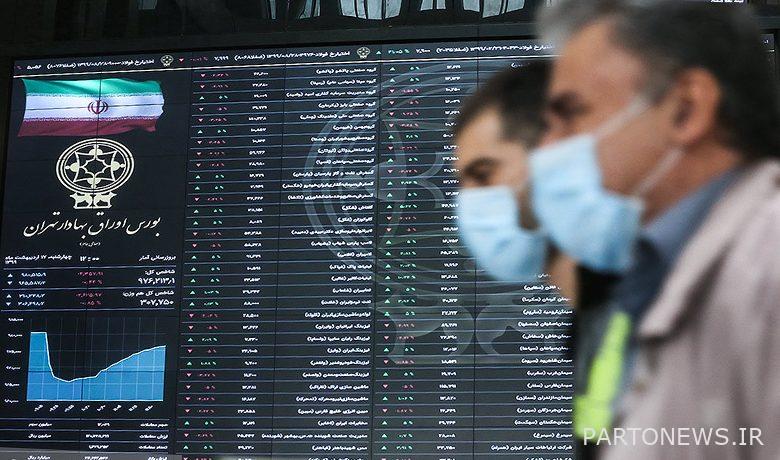The listing of government property began on the stock exchange

According to Tejaratnews, three months after the announcement of the directive of the first vice president, as the vice president of stock exchange announced yesterday; The process of supplying surplus government property will begin soon. So far, 383 government properties have been identified and, as a first step, 34 government properties are to be sold in the coming days on the stock exchange. Bursa Kala also announced; It has also entered into negotiations with this institution for the supply of municipal property.
Quoted from Hamshahri news paparOn October 16th, the First Vice President issued a circular entitled “Government Financing through the Sale of Surplus Property” to all government agencies. It is stated in this circular; All executive bodies are required to notify the Ministry of Economy of their list of surplus assets for sale within the next month. According to this directive, this surplus property can be sold through auctions and stock exchanges. Prior to the issuance of this circular, the Minister of Economy, Ehsan Khandouzi, had also sent a letter to the President requesting that the sale of government surplus property be expedited. The issue of selling government surplus property has increased since 2016 with the increase of government financial constraints, but during these years, the government has not had much success in selling its surplus property and it is still not clear exactly how much government surplus property is.
According to a report submitted by the Treasury of the entire country in November 1397, the amount of government assets up to that date was seven million billion tomans, a large part of which includes the property and shares of state-owned companies and the rest is allocated to other assets.
Former Minister of Economy Farhad Dejpsand announced last year; 2800 trillion tomans of government property includes shares of state-owned companies. That is, the total value of government property is probably 4,000 billion tomans.
Some sources estimate the number of government properties at more than one million, although only a small portion of these properties have been identified. For the past three years, Rahmatullah Akrami, the then Deputy Minister of Economy and Treasurer General, stated that there are one million government properties, of which only 350,000 have been identified and registered in the system: “According to surveys, the value of this Property is estimated at several thousand thousand billion tomans. This figure is so large that I will not announce it from behind the podium.
Assets that are not liquidated
Despite the high value of government property, much of it has not yet been transferred. According to officials, one of the reasons for not selling these properties was the lack of suitable trading platforms and at the same time the resistance of government agencies to sell these properties.
According to the budget law of 1400; “The government should have sold 45,000 billion tomans of its surplus property this year, but so far only 5,000 billion tomans, or 11 percent of it, has been sold. It is also emphasized in the 1401 budget; The government must sell 26,000 billion tomans of its property.
Moin Mohammadipour, head of the Economic Studies Department of the Iran Stock Exchange, says about the reasons why government agencies are not welcome to sell their property: “This is due to the reluctance of institutions to transfer some of their property.” In the case of high-quality properties, device managers are usually less inclined to lease them. According to him, some other reasons for not selling government property also go back to the institutions’ own bureaucracy. Because devices for selling real estate need to get some licenses for their real estate offerings. Mehdi Bayatmanesh, a capital market expert, says: “One of the reasons for not selling government property is the resistance of government agencies, and this is an issue that the Minister of Economy has also reported on.” Also, the non-identification of these properties and the sticking of the devices to them are other factors that have prevented the sale of government property.
Assets to be liquidated
Despite the resistance to the sale of government property since 2016, it now appears that the October 16 circular by Mohammad Mokhber, the first vice president, and the letter from Minister of Economy Ehsan Khandouzi paved the way for the supply of surplus government property. As Javad Jahromi, the deputy director of the Iranian Stock Exchange, announced yesterday; Following the follow-up of the Minister of Economic Affairs and Finance, 383 surplus properties of the government have been identified and 34 surplus properties of the government are to be offered in Burskala in the coming weeks after the acceptance process.
He stressed: “Gradually, other government-identified assets will be accepted and offered.” Information about this property, including the location, the conditions of this property, as well as the type of settlement and the time of offering, will be provided by the Iranian Stock Exchange over time.
Moin Mohammadipour, head of the Economic Studies Department of the Iranian Stock Exchange, said: “Since last year, the real estate market has been established in the stock exchange and we have cooperated with the Ministry of Defense, the Ministry of Roads and Urban Development and one of the banks.
He added: “We are currently negotiating with the municipality of Tehran, which will probably be a good event in the field of selling municipal property in the near future.” Mohammadipour also explained; There is a stock market for the sale of government property and there are no problems. The other platform is the real estate fund, in which the government must form a working group and attract the public investor together in the form of a fund and underwriting, in order to generate revenue from them.

